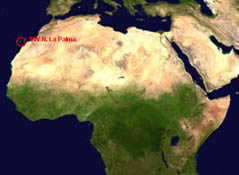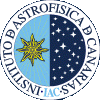|


Where is SuperWASP? Click picture |
Welcome to the WASP website
SuperWASP is the UK's leading extra-solar planet detection
program comprising of a consortium of eight academic institutions which include Cambridge University, the Instituto de Astrofisica de Canarias, the Isaac Newton Group of telescopes,
Keele University, Leicester University, the Open University, Queen's University Belfast and St. Andrew's University.
SuperWASP consists of two robotic observatories that operate continuously all year around, allowing us to cover both hemispheres of the sky. The first,
SuperWASP-North is located on the island of La Palma amongst
the Isaac Newton Group of telescopes (ING). The second,
SuperWASP-South is located at the site of the South African Astronomical Observatory (SAAO), just outside Sutherland, South Africa (Click on the map for more information). The observatories each consist of
eight wide-angle cameras that simultaneously monitor the sky for
planetary transit events. A transit occurs when a planet passes in front
of its parent star temporarily blocking some of the light from it (see the
How it works section). The eight wide-angle cameras allow us to monitor millions of stars simultaneously enabling us to detect the rare transit events.
Details of the planets discovered by the WASP project can be found here.
Please take the time to explore our site and check back regularly for updates. If you have any questions please feel free to contact us at
the address below.
The new SuperWASP Public Archive can be found at wasp.le.ac.uk/public
TEPCat: catalogue of the physical properties of transiting planetary systemsTEPCat
|

